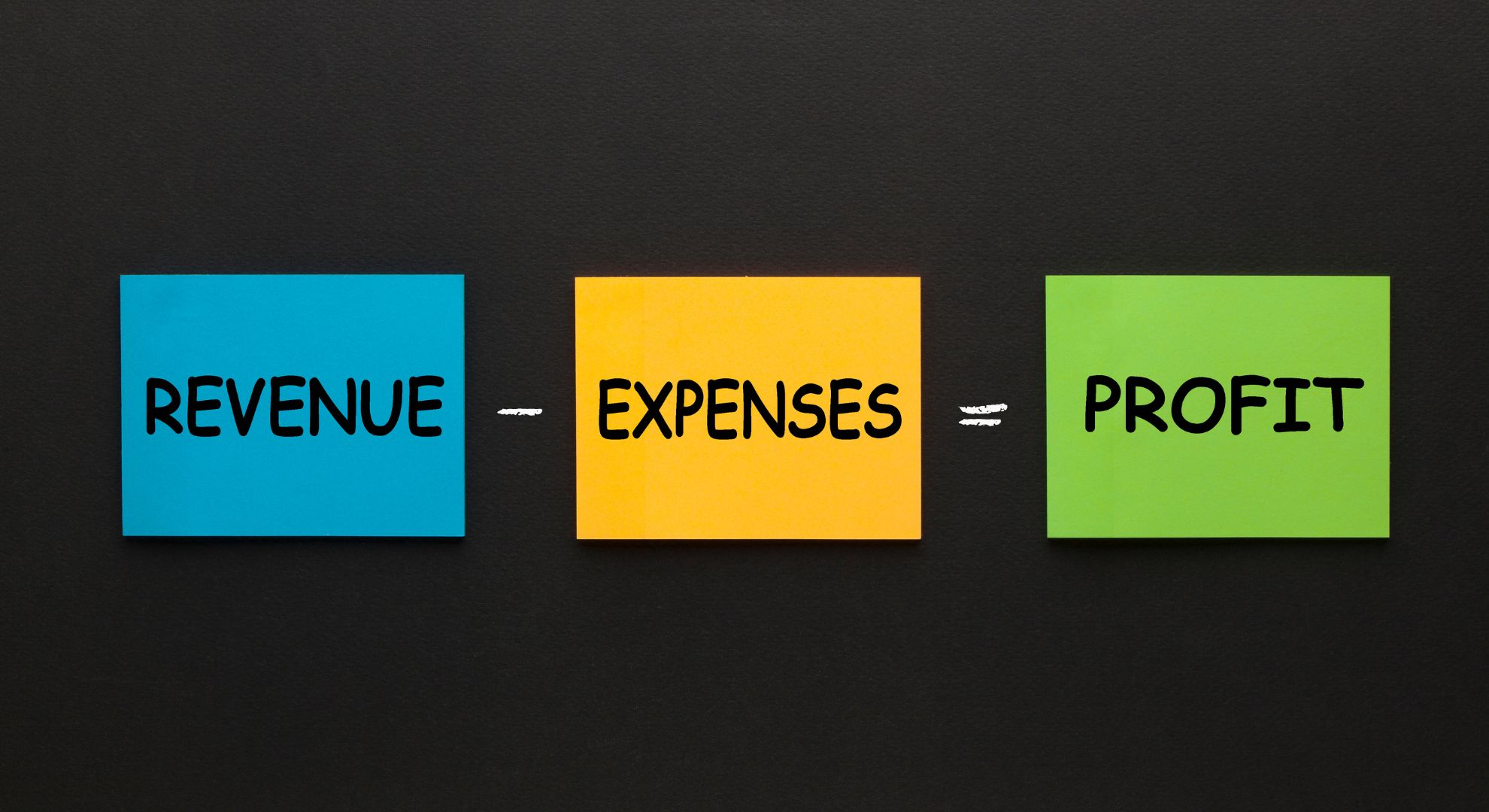
Revenue vs. Profit? In the intricate world of business finance, two terms often cause confusion: revenue and profit. While they both deal with money, they serve different purposes and offer distinct insights into a company’s financial health. You need a firm grasp of these ideas in order to steer your company in the right direction.
- Understanding Revenue
- Exploring Profit
- Revenue vs. Profit: The Key Differences
- Why Revenue Matters
- The Essence of Profit
- Analyzing the Relationship
- Common Pitfalls and Misconceptions
- Making Informed Decisions
- FAQ’s
- Are there industries where revenue and profit are typically closely aligned?
- What is the fundamental difference between revenue and profit?
- Why is it crucial for businesses to understand the distinction between revenue and profit?
- Can a business have high revenue but low profit?
- How can a business improve its profit margin?
Understanding Revenue
Before we delve into the intricate realm of profit, let’s get our bearings straight by understanding what revenue is all about.

Defining Revenue
Revenue is the lifeblood of any business. In its simplest form, it represents the total income generated from selling goods or services during a specific period. Think of it as the money flowing into your company’s coffers. It’s the cash you earn from your customers, clients, or patrons.
Sources of Revenue
Revenue can originate from various sources, including product sales, service fees, royalties, and investments. In essence, it encompasses all the money that comes in as a result of your core business activities.
The Top Line of Your Financial Statement
In financial reports, revenue is typically displayed at the top of the income statement. This prime position highlights its significance. It’s the first number investors, stakeholders, and analysts look at when assessing a company’s performance.
Exploring Profit
Now that we’ve established what revenue is, let’s move on to its counterpart: profit.
What is Profit?
Profit is the amount left over after deducting revenue from revenue-generating costs. It’s the reward for your business efforts, the financial cushion that can be reinvested or distributed to stakeholders.
Components of Profit
Profit isn’t a monolithic figure. It can be broken down into several components, including gross profit, operating profit, and net profit. Each of these provides unique insights into your business’s financial well-being.
The Bottom Line: Net Profit
When most people talk about profit, they are usually referring to net profit. Net profit is the amount that’s left after all expenses, including taxes, have been deducted from revenue. It’s the final piece of the financial puzzle, often referred to as “the bottom line.”
Revenue vs. Profit: The Key Differences
While revenue and profit may both revolve around money, they have stark differences that can significantly impact your business decisions.
A Bird’s-eye View
At a high level, the difference between revenue and profit is simple: revenue is the money coming in, while profit is what’s left after all the bills are paid. However, as we delve deeper, we’ll discover that these two concepts can be deceptively complex.
Why It’s Easy to Confuse the Two
One reason why revenue and profit are often confused is that they share a similar goal: making money. But their paths and purposes diverge significantly.
Why Revenue Matters
Now that we’ve unravelled the basics of revenue and profit, let’s explore why revenue, in particular, is so critical to your business.

Its Significance in Business Operations
Revenue is the life force of your business. Without it, you can’t pay your employees, cover your bills, or invest in growth. It’s the fuel that keeps the engine running.
Tracking Revenue Trends
Monitoring your revenue over time can provide valuable insights. Are you experiencing steady growth, or is there a concerning decline? Tracking revenue trends can help you identify potential issues and opportunities.
The Essence of Profit
While revenue is crucial for your business’s day-to-day operations, profit is what fuels long-term growth and sustainability.
Profits as the Ultimate Goal
Profit isn’t just about survival; it’s about thriving. It’s the surplus that can be reinvested in your business, used to repay debts, or distributed among stakeholders as dividends.
How Profit Drives Business Growth
Profit is the engine of growth. You can use the money to grow your business, fund R&D, or access untapped markets. Without profit, sustainable growth becomes an uphill battle.
Analyzing the Relationship
Now that we’ve dissected revenue and profit separately, let’s examine how these two financial juggernauts are interconnected.
How Revenue and Profit are Interconnected
Your revenue directly impacts your profit, but it’s not the whole story. You must also consider your expenses. It’s the balance between revenue and expenses that determines your profit margin.
The Role of Expenses
Expenses are the money spent when operating a company. These can include salaries, rent, utilities, materials, and taxes. Managing expenses effectively is a critical aspect of maximizing profit.
Common Pitfalls and Misconceptions
Understanding revenue and profit is vital, but it’s also essential to recognize the common mistakes and misconceptions that can trip up businesses.
Mistakes Businesses Often Make
In their haste to maximize profits, many companies overlook the importance of spending. This can lead to inflated perceptions of success.
The Cost of Misunderstanding
Misunderstanding the difference between revenue and profit can have dire consequences. It can lead to poor financial decisions, overexpansion, or even the downfall of a promising business.
Making Informed Decisions
Now that we’ve navigated the intricate terrain of revenue and profit, let’s discuss why this knowledge is vital for making informed decisions.

Why Knowing the Difference is Crucial
When you can distinguish between revenue and profit, you can make smarter decisions. You’ll understand the financial implications of your choices and chart a more prosperous path forward.
Real-world Examples of Good Decision-making
To drive the point home, let’s explore real-world scenarios where businesses made decisions that hinged on their understanding of revenue and profit. These examples will highlight the power of financial literacy.
In the world of business, deciphering revenue vs. profit is not just about numbers; it’s about survival and prosperity. Revenue is the lifeblood that sustains your operations, while profit is the fuel that propels your growth. Having a firm grasp of these ideas will equip you to make smart choices, sidestep obstacles, and plot a road to long-term success.
FAQ’s
Are there industries where revenue and profit are typically closely aligned?
Some service-based industries may have a closer alignment between revenue and profit because they often have lower overhead costs. However, understanding the distinction is vital in all sectors to make sound financial decisions and ensure long-term sustainability.
What is the fundamental difference between revenue and profit?
Revenue represents the total income generated from sales or services, while profit is what remains after subtracting all expenses from that revenue. Revenue is the top line, while profit is the bottom line of your financial statement
Why is it crucial for businesses to understand the distinction between revenue and profit?
Understanding the difference is essential because it helps businesses make informed financial decisions. Mistaking high revenue for high profit can lead to overspending and financial instability.
Can a business have high revenue but low profit?
Yes, it’s entirely possible. A business can generate substantial revenue but still have low profit due to high operating expenses. It’s the profit margin (profit divided by revenue) that provides a clearer picture.
How can a business improve its profit margin?
To boost the profit margin, a business can increase revenue, reduce expenses, or both. Strategies include raising prices, optimizing operations, cutting unnecessary costs, and exploring new revenue streams.
